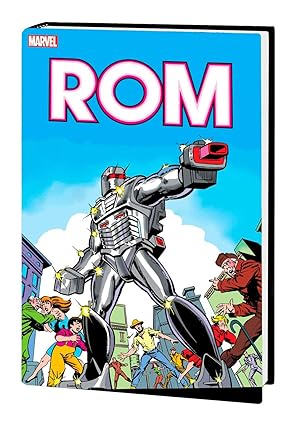This is a review of Marvel Masterworks Daredevil: Volume One. For those not in the know, Daredevil is a masked crimefighter who dresses up in a red devil costume and swings around town on a trick billy club, which he also uses to beat up muggers. Daredevil’s alter ego is Matt Murdock, attorney. His gimmick is enhanced senses – four of his senses are hypercharged and he has a ‘radar sense,’ like a bat. Daredevil got his powers when a barrel of toxic waste hit him in the face, blinding him but enhancing his other senses, thus continuing the Marvel tradition of radiation granting superpowers instead of cancer.
Unfortunately, the first two issues of Daredevil don’t come flying out of the gate. My biggest problem with the first issue is the tone. Reading Spider-Man’s origin story, it’s obvious that Uncle Ben’s death is one of the top three traumatic events in Peter Parker’s life – the other two being Gwen Stacy’s death and the death of his Aunt May, which led to Peter making a deal with the devil and retconning his marriage out of existence.
Or it might be Peter discovering that his arch-nemesis the Green Goblin had sex with the aforementioned Gwen Stacy when she was just a teenager, leading her to give birth to secret twins before the Green Goblin threw her off the Brooklyn Bridge. Years later, those babies grew up to become little Green Goblins who delighted in tormenting a 30-something Peter Parker (in 2023, Peter is now a decade or so younger). Or maybe it was the time Peter grew four more arms, or when he transformed into a lizard-man, or when he smacked his ex-wife in the face. All of which happened. Whatever. The point is, Uncle Ben’s death is shattering and forever changes the course of Peter’s life.
When Matt Murdock’s father is murdered in the first issue, he doesn’t react at all. His attitude is like, ‘welp, time to catch the gangsters who murdered my father.’ He actually kills the guy who murdered his dad, but does it in a sneaky way (heart attack), all the while musing how it’ll save the state the expense of a trial. Sounds like a guy I’d want as my lawyer!
The second issue wastes no time bringing in the guest stars, in this case The Thing of the Fantastic Four. The FF want Matt to do an inventory of the Baxter Building, even though he’s blind and can’t see anything. Coincidentally, Electro tries to rob the Baxter Building at the same time. Electro is a member of Spider-Man’s rogue gallery, another bad sign. It’s true that two heroes can share the same villain (read: The Kingpin), but it can also be a sign of desperation.
Long story short, Electro dumps Daredevil into a rocket and blasts him into space. Daredevil’s super senses enable him to reverse the rocket and land in Central Park. This is exciting when it’s happening, but falls apart when you think about it because Daredevil’s superpower isn’t piloting rocket ships. I also started to wonder why Electro didn’t just electrocute him or stick a knife in his ribs.
This graphic novel finds its legs in later issues, when we get appearances by other members of Daredevil’s rogue gallery, The Owl, The Purple Man, and Stilt-Man. Most of the villains are outright goofy, although The Purple Man is later retconned as a serial killer. There’s also a standout issue featuring the Sub-Mariner that’s the highlight of this volume. But my favorite villain is the Eel, whose superpower is lubing himself up so he slips out of people’s grasp.
Perhaps coincidentally, the addition of artist Wally Wood coincides with the jump in the quality of this graphic novel. Mr. Wood redesigns Matt’s costume, changing the canary yellow duds to the red devil outfit we’ve all come to love. He also gives us an in-depth diagram of Matt’s billy club/cane. I learned that Daredevil’s horns double as transmitters, which I didn’t know. You learn something new every day!
Matt Murdock’s personal life isn’t as interesting, featuring a puerile love triangle between Matt, his partner Foggy, and their secretary Karen Page. Matt and Karen are in love, but Matt doesn’t say anything because he can hear heartbeats and he knows Foggy is in love with Karen, and – in his words – that wouldn’t be right. Karen doesn’t say anything because she’s unsure if Matt loves her, which he doesn’t because they’ve never even dated. As far as I can see, the only person in the love triangle who acts like an actual adult is Foggy, who proposes to Karen. I mean, this is some teenager shit– which makes sense, because the book’s aimed at teenage boys.
I can see Matt not wanting to crap where he eats, as the earthy old aphorism goes, but he’s the guiding light of the law firm. He doesn’t really need Foggy. I guess he doesn’t want to hurt his partner’s feelings? This is truly shocking, because modern Matt Murdock has been written as a horndog if not an outright misogynist. Here, he’s likable with an endearingly goofy rogue’s gallery. Bottom line: once this graphic novel finds its legs, its very good.








